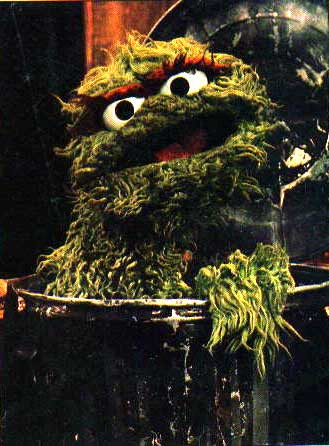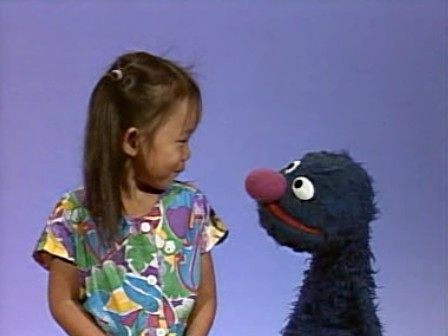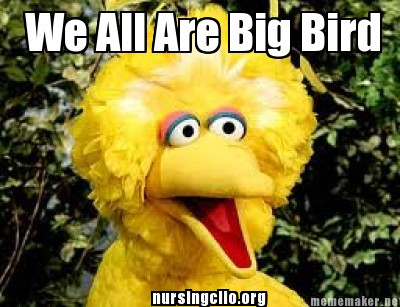Sesame Street holds a special place in the hearts of generations. For many, afternoons in daycare were synonymous with the iconic theme song, “Sunny days. Sweepin’ the clouds away. On my way to where the air is sweet. Can you tell me how to get, how to get to Sesame Street?“. While the show boasts a cast of beloved characters, from the grumpy Oscar the Grouch to the ever-lovable Elmo, one figure has always stood tall – both literally and figuratively: Big Bird From Sesame Street. His towering presence is matched only by his immense kindness, making him a timeless favorite.
This beloved character became unexpectedly embroiled in political discourse during the 2012 presidential debates. When Mitt Romney, then a presidential candidate, stated, “I’m sorry Jim. I’m gonna stop the subsidy to PBS. I’m gonna stop other things,…I like PBS, I like Big Bird, I actually like you too,” it resonated deeply with viewers. Romney’s comments, while seemingly lighthearted, highlighted a deeper issue: the perceived value of public broadcasting and the values Big Bird embodies. The reaction underscored how Big Bird from Sesame Street represents core American ideals, and why targeting him felt like an attack on those very values.
Big Bird: A Symbol of Openness, Tolerance, and Kindness
Big Bird’s enduring appeal lies in what he represents. Sesame Street, since its inception in 1969, was designed to reflect a changing America embracing diversity. It depicted an urban setting where humans and Muppets of all backgrounds – races, genders, beliefs, abilities, sizes, and shapes – interacted harmoniously. This was a deliberate choice by the show’s creators, aiming to create a relatable world for urban children. However, Sesame Street’s inclusive nature never alienated suburban children. Every child could find joy in Grover’s slapstick antics, Cookie Monster’s insatiable appetite, and the songs and games shared with the diverse array of guest stars at 123 Sesame Street. Big Bird, with his gentle nature and open heart, became a central figure in this welcoming landscape.
Fostering Curiosity and Learning with Big Bird
Sesame Street’s educational mission is another key aspect of Big Bird’s significance. The show’s curriculum was meticulously crafted to reach children who lacked access to preschool education, while simultaneously reinforcing lessons for those who did attend. The primary goal was to educate future generations in an engaging and enjoyable way, nurturing children’s natural curiosity. The brilliant incorporation of Jim Henson’s Muppets, like Big Bird, bridged the gap between fantasy and reality, captivating young minds. Sesame Street’s sustained popularity for over five decades, and its global reach, speaks volumes about its effectiveness in shaping children’s understanding of the world. While children learned their ABCs and 123s, they were also absorbing crucial life lessons about friendship, compassion, and empathy, even from characters like the seemingly grumpy, yet ultimately lovable, Oscar the Grouch.
Alt text: Oscar the Grouch peeks out from his trash can on Sesame Street, a character known for his grumpiness but also his hidden heart.
Big Bird and The Importance of Honesty
Sesame Street didn’t shy away from tackling real-life issues, further solidifying its commitment to honesty, a trait exemplified by Big Bird. When Mr. Hooper, played by Will Lee, passed away, and when Maria, portrayed by Sonia Manzano, got married and became pregnant, the show’s producers seized these moments to expand storylines and teach children about significant life events. Death, love, and family were addressed with age-appropriate honesty, demonstrating a willingness to engage with topics not typically considered “child-friendly.” This approach taught millions of children about the realities of life in a sensitive and truthful manner, with Big Bird often serving as a relatable character navigating these complex emotions.
Alt text: A warm photo of Mr. Hooper from Sesame Street behind his counter, a beloved character whose passing was addressed on the show to teach children about death.
Sharing, Generosity, and Trust: Lessons from Big Bird and Friends
Sharing, generosity, and trust are recurring themes on Sesame Street, consistently modeled by Big Bird and his fellow residents. Over the decades, numerous characters have learned valuable lessons about these principles. The show emphasizes the importance of sharing feelings, promoting honesty, and building trust. Jim Henson’s Muppets, including Big Bird, fostered a sense of trust with children, encouraging them to trust their own emotions and express themselves honestly. The introduction of Mr. Snuffleupagus (Snuffy), Big Bird’s often-invisible friend, perfectly illustrated this. Big Bird’s eagerness to share his best friend with everyone on Sesame Street was met with disbelief from the adults, highlighting a child’s perspective when not believed. This storyline, particularly in the 1980s amidst growing awareness of child abuse, prompted the show to address the potential miscommunication around Snuffy’s invisibility. Big Bird’s frustration mirrored the exasperation children feel when adults dismiss them, especially concerning sensitive issues. Sesame Street’s response reinforced its commitment to encouraging children to speak out and ensuring every voice is heard.
Alt text: Grover from Sesame Street playfully interacts with a child, highlighting the show’s focus on friendship and positive interactions.
Alt text: Big Bird and his invisible friend Mr. Snuffleupagus stand side-by-side, showcasing their unique friendship and the show’s exploration of trust and belief.
Big Bird: A Beacon of Hope for Generations
Above all, Sesame Street, and Big Bird in particular, embodies hope. Hope for a better future, hope in children, hope in community, and hope in the world. Sesame Street instilled in generations the understanding that children, regardless of their backgrounds, share fundamental qualities: curiosity, playfulness, kindness, and a desire to share. This powerful message resonated deeply, even inspiring a young girl to dream of running away to Sesame Street, seeking a place embodying hope, tolerance, sharing, honesty, and openness. Sesame Street provided, and continues to provide, millions of children with the hope that the world can be a better place, if they embrace the values exemplified by the residents of 123 Sesame Street.
The political targeting of PBS and, by extension, Big Bird, struck a chord because it felt like a rejection of these very values. Suggesting the defunding of PBS, a vital source of educational programming like Sesame Street, was perceived as prioritizing values antithetical to those Big Bird represents: kindness, generosity, and community spirit. Silencing Big Bird, even metaphorically, equates to silencing the positive messages he embodies and the hope he inspires.
Standing up for Big Bird is standing up for these enduring values. We are all, in a way, Big Bird, representing the best of what we strive to be: open-hearted, curious, honest, generous, and hopeful. His continued presence on Sesame Street remains a vital reminder of these essential human qualities.
Alt text: A group of diverse children and adults with Big Bird on Sesame Street, visually representing the message “We All Are Big Bird” and the show’s inclusivity.
Reference
Davis, Michael. Street Gang: The Complete History of Sesame Street. New York: Viking Press, 2008.



